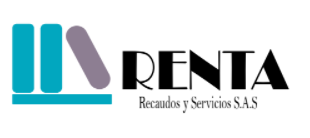Content
Despite their unique challenges, athletes need to undergo the same recovery process as the rest of us. In many cases, this involves withdrawal management with the use of medication-assisted treatment. In addition to withdrawal management services, athletes can choose between an inpatient, outpatient or partial hospitalization program, depending on their addiction history and severity of the addiction. To minimize the phenomenon of doping, information and prevention programs, starting with athletes at a young age, and involving other stakeholders (e.g. the athletes’ doctors, coaches or family), are necessary to establish and maintain correct attitudes and behaviors. It is important to note that from the legal point of view, the athlete is 100% responsible for the substances that enter his body. Thus, if the athlete ingests accidentally an forbidden substance, he is still responsible for it.
Elite athletes competing at international and national levels are subject to standardized anti-doping guidelines under the auspices of WADA and related national organizations. WADA is the international independent agency that publishes the World Anti-Doping Code, which is the document harmonizing anti-doping policies in all sports and all countries.61 The Code was first adopted in 2003 and became effective in 2004. Androgens include exogenous testosterone, synthetic androgens (eg, danazol, nandrolone, stanozolol), androgen precursors (eg, androstenedione, dehydroepiandrosterone), selective androgen receptor modulators, and other forms of androgen stimulation. The latter categories of substances have been used by athletes in an attempt to increase endogenous testosterone in a way that may circumvent the ban enforced on natural or synthetic androgens by WADA. Gene doping refers to the use of nucleic acid sequences (delivered either as naked DNA or through viral vectors) and/or normal or genetically modified cells to enhance sports performance (385, 404, 405). Gene doping has not been detected in any sports event to date, although many experts have predicted that gene doping will become a reality in the near future (385, 404,–408).
EFFECTS OF PEDS: SARMS VIDEO TRANSCRIPT
Studies have linked community-acquired MRSA colonization and soft tissue infection with competitive sports participants (298). Additional research has linked injection of drugs with community-acquired MRSA infection (299). Studies have also reported soft tissue abscesses related to anabolic-steroid injections (300, 301). Investigations of the structure-activity relationships https://ecosoberhouse.com/ (Figure 5) have established that removal of the 19-methyl group increases the anabolic activity; thus, 19-nortestosterone (nandrolone) is a potent AAS and a very popular training drug that accounts for a large number of positive tests (94). 7α-Alkyl substitutions of the 19-nortestosterone molecule may further increase the anabolic to androgenic activity.

Even so, it is unclear how this may translate to the elevated levels of androgens characteristic of AAS use. Under these circumstances, the cellular targets and mechanisms of action may be substantially different from the effects at normal physiologic levels. Another concern relates to the possible interaction of AASs with CNS injuries, including traumatic brain injury and posttraumatic stress disorder. In recent years, clinical, scientific, and public attention has focused on the chronic neurologic and behavioral effects of head injuries in football players and soldiers (400).
Performance-enhancing drugs: Know the risks
The social, economic, and policy risks to athletes in both cases are minimised through the harm reducing processes that ensure use remains undetected. Applying the heuristic developed by Rhodes (2002, 2009) to outline the factors and levels of environmental risk to the sport context illustrates several ways that sport and anti-doping policy create a risk environment that may produce doping behaviours (see Table 1). Anti-doping policies are underpinned by a sport culture in which doping is positioned as an issue of both morality and health. Much like other prohibitive substance use policies, these policies also create their own set of risks for athletes. Indeed, many studies have identified the criminalisation of drug possession for recreational use as among the most damaging features of those risk environments, not least because such policies often preclude or limit the formation of enabling environments. As a part of a broader ‘war on drugs’ climate (Coomber, 2014; Henning & Dimeo, 2018), anti-doping policies tend to increase risk across categories for doping athletes.
An initial study showed that clubs with higher accreditation levels reported less alcohol use than clubs with lower accreditation levels (Rowland et al., 2012). Subsequently, researchers conducted a trial where 88 football clubs were randomized to the intervention or control condition. After the intervention, participants in the intervention condition reported less risky alcohol use than those in the control condition (Kingsland et al., 2015). Twelve-step programs are likely the mode of alcohol and drug abuse intervention most familiar to the general public. They are most frequently affiliated with Alcoholics Anonymous or Narcotics Anonymous (AA/NA).
Methods to increase skeletal muscle oxygen delivery
Reichel et al (393) has reported a n SDS-PAGE method for detecting erythropoietin that also uses double immunoblotting chemiluminiscence. The method separates the erythropoietin glycoforms on the basis of their hydrodynamic volume. Chemiluminiscence produces a single broad band; the position of the band is relatively sensitive to the carbohydrate content of the erythropoietin (392). negative effects of drugs in sport Erythropoietin is a glycoprotein hormone that regulates red cell production. It is produced by the peritubular interstitial fibroblasts of the kidney and the perisinusoidal cells in the liver. In adults, the kidneys are the dominant source of circulating erythropoietin, although the liver is an important contributor to erythropoietin production in the fetal and perinatal period.

Before 1998, debate was still taking place in several discrete forums (IOC, sports federations, individual governments), resulting in differing definitions, policies, and sanctions. Athletes who had received doping sanctions were sometimes taking these sanctions, with their lawyers, to civil courts and sometimes were successful in having the sanctions overturned. The Tour de France scandal highlighted the need for an independent, nonjudicial international agency that would set unified standards for anti-doping work and coordinate the efforts of sports organizations and public authorities. The IOC took the initiative and convened the First World Conference on Doping in Sport in Lausanne in February 1999. Following the proposal of the Conference, the World Anti-Doping Agency (WADA) was established later in 1999.
